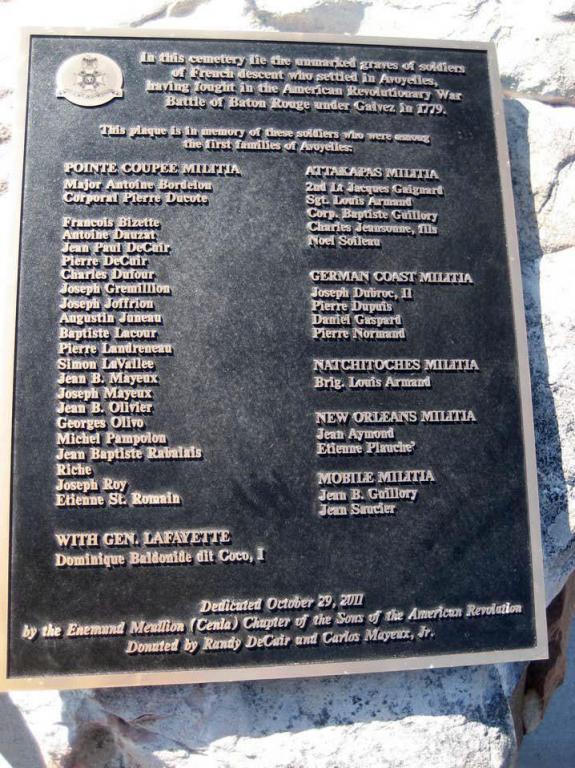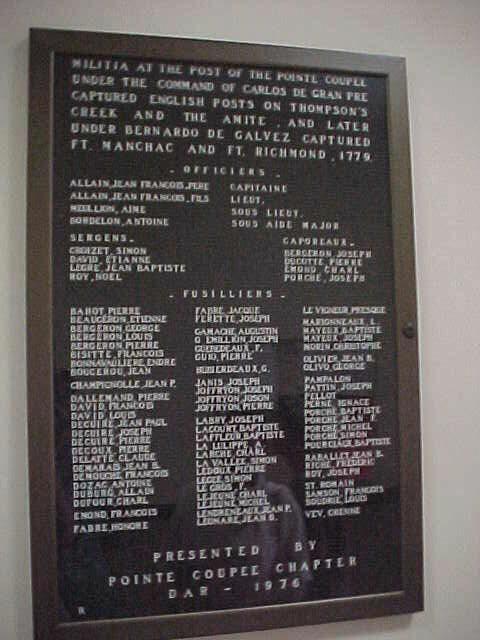Daniel GASPARD/NORMAND
SAR Patriot #:
P-327385
The following information was assembled from numerous sources and cannot be used directly as proof of Qualifying Service or Lineage.
It is considered a research aid and is intended to assist in locating sources that can be used as proof.
State of Service: ESP
Qualifying Service: Patriotic Service
Birth: bef 16 Jan 1747
Death: 23 Mar 1818 / Orleans / LA
Qualifying Service Description:
A fusilier in the Company of the Militia for the German Coast of Louisiana serving under Bernardo de Galvez during the Baton Rouge campaign
Additional References:
- Albert J. Robichaux, "Louisiana Census and Militia Lists, 1770-1789", Hebert Publications, Rayne, Louisiana, Third Printing, 1994
- "Sacramental Records of the Archdiocese of New Orleans", Volume 13, pg 187
- DeVille, Winston. "Louisiana Soldiers in the American Revolution." Ville Platte, LA: 1991, pg 52
- Schmidt, Elizabeth Whitman. “Louisiana Patriots, 1776-1783. “ Washington, DC; National Society, Daughters of the American Revolution, 1994, pg 23
- Churchill, Charles Robert. “The Galvez Expedition: 1779-1783, Register of Infantry Regiment of Louisiana, Roster.” New Orleans Genesis, v. 18, No. 71 (June 1979), pg 383
Spouse: Marie Francoise Madere
Children: Francoise;
Members Who Share This Ancestor
| Date Approved | Society | ACN | SAR Member Info | Lineage via Child | View Application Detail | |
|---|---|---|---|---|---|---|
| 2012-01-13 | LA | 39903 | Clifford Joseph Normand (157351) | Francoise | ||
| 2017-04-21 | TX | 72736 | David Lee Peavy (194635) | Marie |
Location:
New Orleans / Orleans Parish / LA / USA
Find A Grave Cemetery #:
Marker Type:
SAR
SAR Grave Dedication Date:
29 Oct 2011
Comments:
- On 29 October 2011, Enenomd Meullion (Cenla) SAR Chapter dedicated a plaque at the St. Paul the Apostle cemetery in Mansura, Avoyelles, LA
- Memorial to those soldiers who served in the local militias and German Coast Militia
- Daniel (Normand) Gaspard is listed as a member of the German Coast Militia
- Photos displayed courtesy of David L. Peavy, TXSSAR
Directions to Cemetery / Gravesite:
By Spanish Royal Decree in 1789, the St. Louis Cemetery was opened. Because high ground was valuable, the Cabildo chose a swampy site to locate the cemetery. This resulted in many above ground vaults. City development resulted in the size of the cemetery being reduced. A marker that had been in the center of the cemetery is now at the entrance. The cemetery is owned and operated by the Archdiocese of New Orleans
Additional Information:
- No DAR GRS record found - Sep 2022
- Daniel Gaspard Normand dropped the Normand surname subsequent to his military service and became Daniel Gaspard

